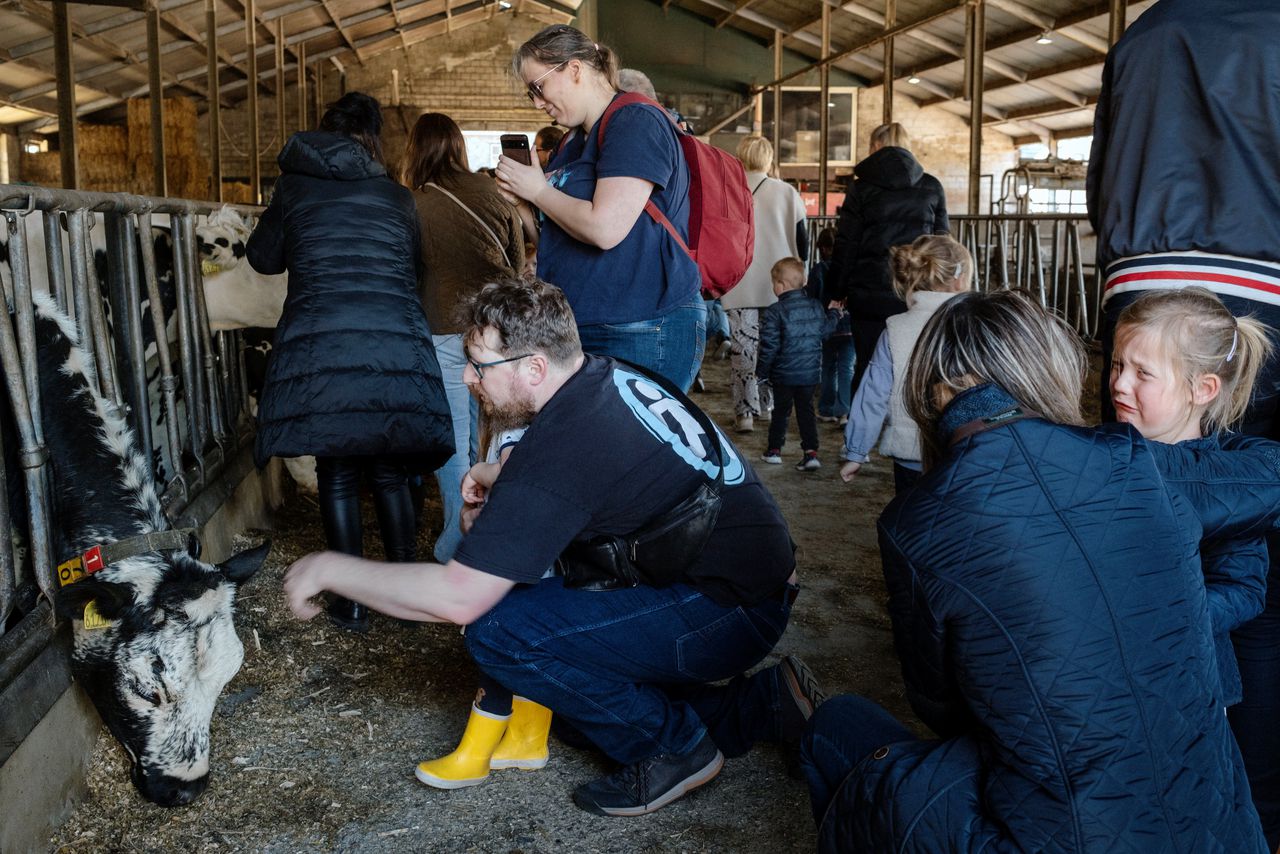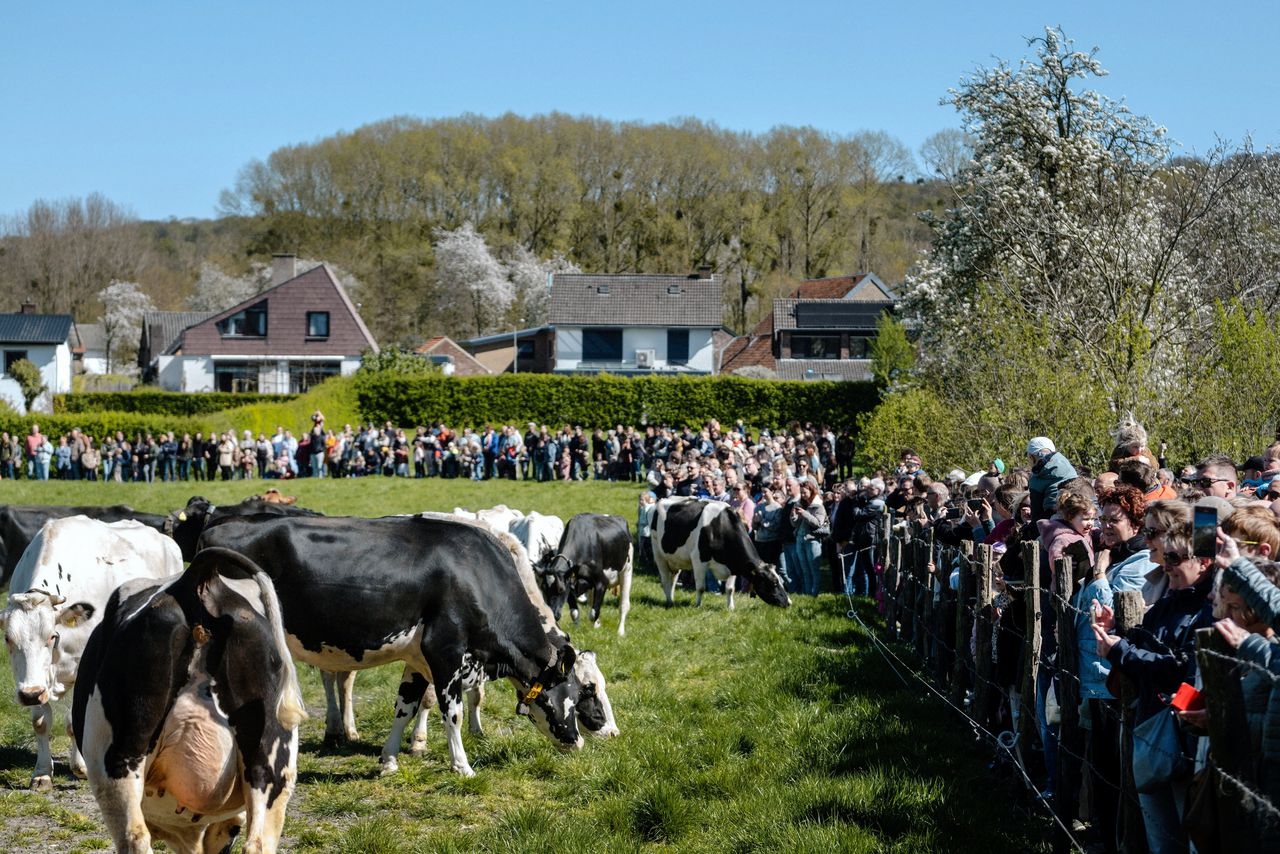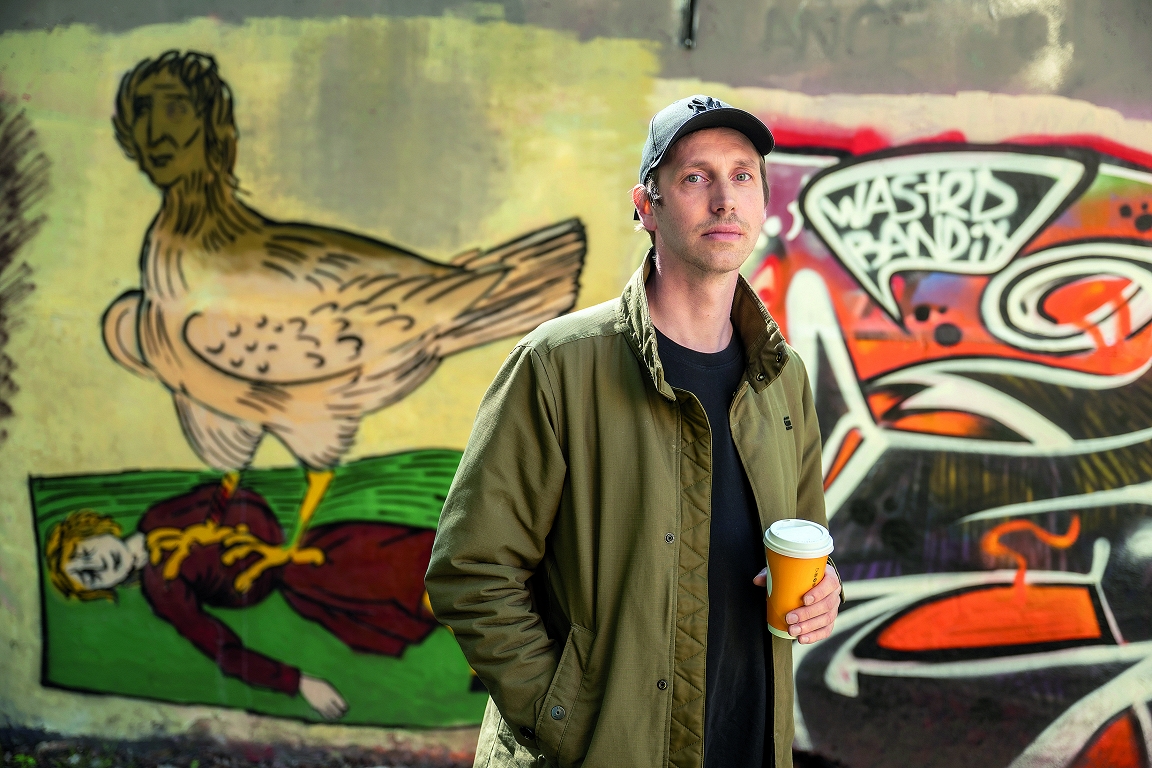The annual cow dance is a rare positive PR moment for the cowing dance

The dairy farm of the Thijssen family in the Limburg village of Geulle has been transformed on Sunday into a small festival site: cars are accompanied by traffic controllers in green T-shirts to an improvised parking space on the lawn. Prayers appear from the trunk that have to be folded out and bags with bags of chips.
Once a year, visitors from neighborhood villages and cities come to the farm of the Thijssen family to see the ‘cow dance’ there -the moment that the dairy cows can go outside again for the first time. That is also called the pasture, but cow dance is more appropriate: the animals jump and hop into the meadow when feeling the fresh grass under their hooves. « The most beautiful day of the year, » says Boosendaughter and owner of the farm Elke Thijssen (33). It is estimated that there are more than two thousand people today – Thijssen does not keep up with it.
Consumption chess
While the venial sector has been in the news in recent years, due to, among other things, the nitrogen problem and discussions about animal suffering and mega stalls, many farmers seize the annual moment of the cow dance as a positive PR moment. « I want to tell the story of the farmer, » says Thijssen. « We are not animal executioners. We prefer to see our cows in the meadow, just like society. » She knows that there is a lot of criticism of the livestock sector: « I don’t have to win that discussion. If you find it pathetic for the animals, then you can find that. But I want to have the chance to show our side. Everyone can have an opinion about it, but with mutual respect. »
The Day of the Weidegang was once introduced by dairy company FrieslandCampina
There are stalls on the site in front of the cowshed where regional products are sold and postcards with Limburg dialect (‘Perficially Mit Diene Breedig’). There is also a bar, fries stall, bouncy castle and a stall where you can get consumption socks. There is a long line for the corner where children can be painted. The first beers are now ordered.
The day of the pasture was once introduced by dairy company FrieslandCampina and is related to the meadow milk quality mark. That promises that the cows graze outside at least 120 days a year, at least six hours a day. It is not the same as the Beter Leven quality mark with three stars: then cows must be outside at least 180 days a year, and there are also environmental requirements. For milk from cows that are in the meadow, the farmer gets more money and the consumer pays a little more. But if it is up to the cheerful day trippers in Geulle, that is no problem: a cow belongs in the meadow, they say.
Steak
« We are here with four adults and six children, » says Mark Beckers from Landgraaf, who stands next to the stable with a child on his arm. He just photographed with a cow who stuck her head outside. Today is a nice learning moment for the children, he thinks. « That cows are both in the stable and outside. » It is of course also true that the cow we see also takes care of that steak on your plate, he adds. « But we’re not talking about that today. »
It’s just belonging to the Netherlands
Incidentally, it is not a national fixed moment, the cow dance. Every farmer can decide for himself when the cows go outside. Ideally, the temperature is not yet too high, but the grass long enough. The Thijssen family has had a fixed day since 2018: the first Sunday of April. « We first did it on Saturday, but many parents with young children have sports clubs or other activities. »
At the museum pace, a group of people with prams shuffle along the busy row for the fries stall. Most visitors slowly move to the meadow, in the run -up to the moment where everyone comes. Last year it was too busy, the family thought. « Then there were three thousand people. We have now hung floor plans in the stable, » says Boerin Thijssen.

The cubicle stable is open so that visitors can walk through it. Cows are on gratings and each have a ‘box’ of 1.10 meters wide to rest in. The cows can walk around in the stable, father Peter Thijssen explains. « Free-cow traffic. » A visitor carefully strokes a cow who stabbed her head through the fence to eat, while another films it. On the left in the stable are the dairy cows, on the right the calves. They are still too young and do not go outside today. Only at a year and a half is it their turn.
Fidgety
« The children see where the milk comes from, » says Leighanne Meuleners from Geleen, who stands at the front with her husband and their two children in a cart. She teaches animal care herself. In the meantime, small children are shouting in the bouncy castle and the cows roar in their stable. « They are restless, » says father Peter Thijssen, about the cows then. « They know what is about to happen. »

At exactly two o’clock the time has come. Almost everyone has gathered around the pasture, children on the shoulders of fathers. There is a drone in the air to film the scene. The cows run into the meadow, just past the fences. They jump, kicking back and legs up.
Frank Timmers, who is watching with his wife, is the most beautiful. « It’s just part of the Netherlands. » His wife thinks it is especially important for animal welfare. « And the milk of a cow that has eaten grass is also tastier. »
Ten minutes after the hop moment, most cows are already grazing. A few make another jump. The first visitors pull the prams over the grass back to the site. A boy pulls his mother’s sleeve because he wants to keep looking. « No, we’re going back, » she corrects. « We will no longer have a place to sit. »

:format(webp)/s3/static.nrc.nl/images/gn4/stripped/data132512191-bf7b93.jpg)
/s3/static.nrc.nl/images/gn4/data133305174-ec8c91.jpg)




